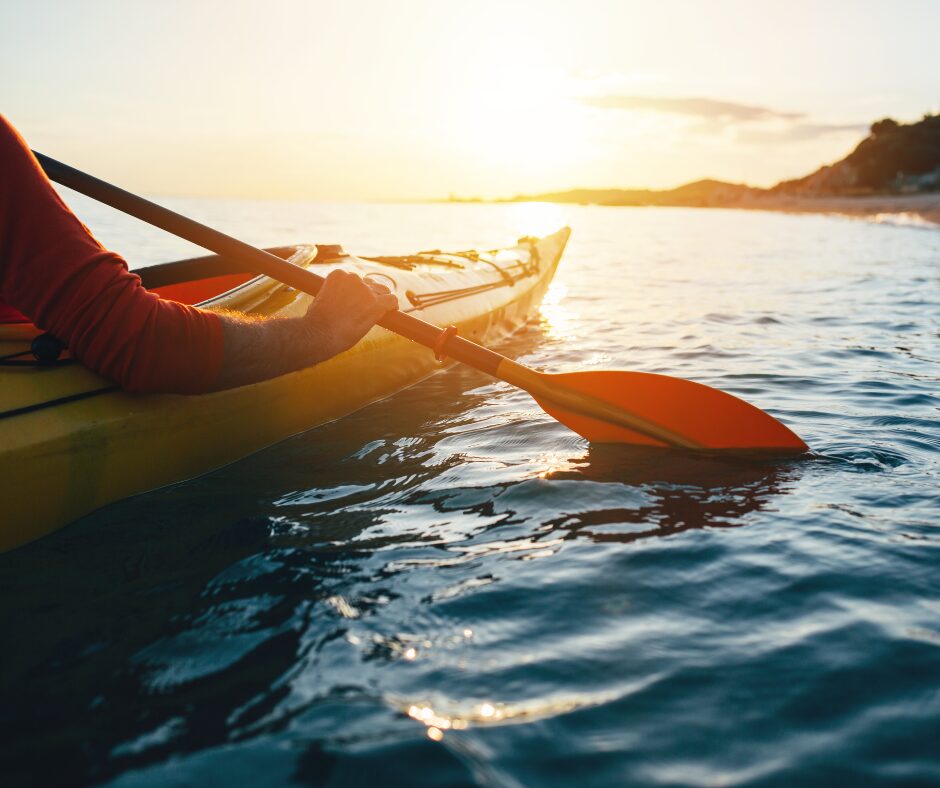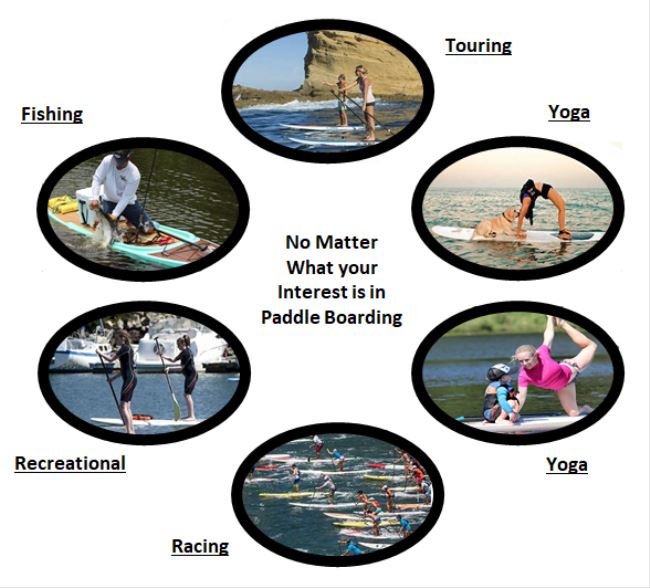
If you want to get the most out of your kayaking experience and achieve optimal speed while expending minimal effort, you need to focus on good stroke technique. Having a good stroke will not only make you more efficient in the water but will save your arms from getting tired as quickly. Here are some pointers to get you moving:
How to Hold the Paddle
Look at the blades of your paddle. You will notice that there is a slightly longer side of the blade. This long edge of the blade should be on top. You will also notice that the blade isn’t perfectly flat, there is a scooped side. This scooped side should be facing you to help propel you through the water.
Now that you know how the blade should look, it’s time to learn how to hold the paddle. A helpful tip for getting the right-hand placement on the paddle is to rest the paddle on your head and move your arms until they sit at a 90-degree angle, like a goal post. Feel free to differ your hand placement while kayaking until it feels comfortable to you. Doing so will work different muscles in your arms and can help keep your arms from fatiguing as quickly. Lastly, it is best to keep a light grip on the paddle as it is better for your joints and allows your wrists to stay straight.
Using a Forward Stroke
Once you have your hand placement down, it’s time to start moving. Place the blade of the paddle in the water near your foot. Twist your torso over to the side of the submerged blade and use your core to push yourself through the water. Pull back with your other hand as you move forward. You know it is time to switch sides when the blade in the water lines up with your hip. Your core is a larger muscle group than your arms; let it do most of the work, otherwise, you will tire out your arms very quickly. Also, having a good upright posture will help keep you balanced in your kayak and ensure you are utilizing your core muscles properly.
Changing Directions Without Losing Speed
A sweep stroke is used to help you steer the kayak or slightly change directions. To do this, lean forward in the kayak while maintaining your balance. Put your blade in the water in front of you and make a large sweeping motion, ending towards the rear of your kayak. It is helpful to follow the paddle with your eyes to make sure you are moving your paddle as far back as you can.
How to Stop Your Kayak
To stop your kayak, you will need to use a reverse stroke. To do this, place the blade of the paddle behind you towards the rear of your kayak. Use your core to push the paddle forward, pulling back with your other arm. Do this on both sides to slow yourself down. This can also be used to propel you backward in the water.
Paddling a kayak takes practice, but mastering these techniques is worth the effort. By using an overhand grip, engaging your core muscles, and keeping your paddle perpendicular to the water, you’ll find yourself moving faster and maintaining your energy for longer. The next time you head out in your kayak, keep these key paddle strokes in mind. Before you know it, you’ll be gliding across the water!





